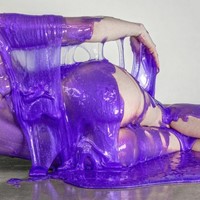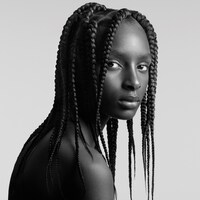Botox, fillers and plastic surgery are becoming increasingly necessary to live up to contemporary beauty standards, creating a beauty tax that is pricing many people out
This week marks five years since the launch of Dazed Beauty! Over the next five days we will be celebrating this anniversary by bringing you big celebrity interviews, cultural deep dives into the weird and wonderful trends of today, and going back through the archives to resurface some of our favourite pieces.
To quote our co-founder Bunny Kinney in his original editor’s letter, Dazed Beauty is: “a space for us to document, deconstruct and experiment with beauty in all its forms, in every dimension, and tell the stories of the lived experience each one of us has in our own individual bodies as we navigate the world, both online and off.” We hope we’ve remained true to our promise and will continue to be challenging, anti-establishment, diverse and exciting. Thank you for being part of our journey.
Beauty and wealth have always been bedfellows. Throughout history, the beauty standard of any given period has served the ideological interests of the ruling class. During the Renaissance, plump, pale skin was a prized signifier of high social status, while sun-darkened skin became synonymous with lower classes labouring outside. Today, however, that same tanned complexion is desirable, coming, as it has in the west, to indicate leisure time, holidaying abroad and the luxury of disposable income.
While the distribution of ‘natural’ beauty is a democratic genetic process, the beauty standard is quite the opposite. Appearance has always been a crucial source of differentiation for those with privilege, who use their wealth to communicate their social ‘value’ and set themselves apart from those without. As a result, beauty reflects a class hierarchy and has long been a site of social struggle. While some people have the economic freedom and class standing to engage in beauty work, others are left with the stigma of ‘ugliness’.
In 2022, beauty standards are creating a beauty tax that is higher than ever. With cosmetic procedures becoming readily available, there is now an expectation not only of the usual roster of ‘maintenance’ treatments – hair, nails, eyebrows, lashes, teeth – but of ‘tweakments’ like injectables and surgeries. According to the Aesthetic Plastic Surgery National Databank, the number of botox procedures performed in America increased by 54 per cent between 2019 and 2020, and fillers were up by 75 per cent. The UK is the world’s fastest-growing market for facial filler, and British plastic surgeons reported a 70 per cent increase in consultation requests over 2020.
Often, those who are celebrated for their beauty are increasingly people who have undergone various surgeries and treatments. The “I’m not ugly, I’m just poor” meme format is a reflection of this change: using ‘before’ and ‘after’ pictures of high profile celebrities like Bella Hadid, Kylie Jenner and Simi and Haze, it demonstrates how money rather than genetics is all that’s necessary to create a face that’s deemed as beautiful.

This is significant because now, more than ever, our faces have become our most valuable commodity. Thanks to social media, selfies and Zoom calls, our appearance is always front and centre and it has become something we ‘should’ invest in. Middle and upper-class women have the financial freedom to view an expensive and risky surgical procedure as a ‘treat’ to allow them to fit the beauty standard and reap the rewards of adherence. The result is a benchmark for ‘beauty’ only reserved for those with disposable income, and a new beauty class system in which there are those who can afford to participate and those who cannot.
Adhering to the beauty standard requires a privilege, but also generates privilege, creating a vicious cycle in which those without the economic freedom to participate are heavily penalised, financially and socially. ‘Poorly groomed’ women stand to earn 40 per cent less than their beautified counterparts, while attractive people are over 20 per cent more likely to be called back for a job interview, and are perceived to be more socially skilled, trustworthy, confident and competent. “If you’re white, middle class and you’ve got a good job, you don’t need these things as much,” says Ruth Holliday, professor in Gender and Culture at the University of Leeds. “It’s when you’re marginalised that this beauty work becomes so much more important.”
As the cost of beauty increases – the jump between a manicure and a nose job is significant – people are being priced out and putting themselves at risk financially in order to participate. A recent article for Refinery29 detailed how women are racking up thousands of pounds in credit card debt in order to get Botox and filler. According to a recent survey of 900 salons by beauty booking software Pamperbook, women are spending an average of over £1,000 per month on nails, hair and aesthetic treatments such as facials and injectables. The pressures levelled against women to retain and maintain the perfect face, resist the effects of ageing, remove their body hair and groom themselves to perfection, mean that beauty treatments are often paid for over other ‘essential’ items.
It’s not just finances that we are risking to get the perfect face, but our health as well. Those who can’t afford reputable clinics cut corners by travelling abroad where prices are cheaper. In 2014, an estimated 41,000 medical tourists visited Colombia where breast augmentation plus two days in a hotel can be had for around $4,000. However, many of these ‘affordable’ procedures are done by unlicensed, untrained doctors – up to as many as 30 per cent – and in 2016, 30 women died during cosmetic surgeries. As Naomi Wolf prophesied in her 1990 polemic The Beauty Myth: “The free market will compete to cut up women’s bodies more cheaply, if more sloppily, with no-frills surgery in bargain-basement clinics”.
“We found in our research on cosmetic tourism that most of the people who travelled abroad for surgery weren’t wealthy people, they were doing it because it was cheaper there and they could get a deal,” says Professor Holliday. “Beauty technology was seen almost as an equivalent to qualifications. For middle-class people, further education is seen as a necessity for success, but beauty treatments work in the same way for those who are excluded from that culture. It’s all about investing in yourself to try and make a living.”
While beauty work done well can act as a form of social advancement, when badly done these procedures can have the reverse effect, becoming their own class signifiers. Whether it’s larger lips, poorly applied filler or too-white veneers, the way beauty treatments are performed is adding another layer of social separation. “For middle-class people, seeing somebody who has obviously had work done can evoke a bit of disgust,” says Professor Holliday.
“Working-class bodies are nearly always marked as excessive, as too much, and lip filler would be a classic example. However, working-class people might not see it in the same way. Bigger is better because it’s the obviousness of it that shows you are a body of value, and that you should be included in society. By working on your own body, you’re showing your skill, your resources and your labour, which is more valued in working-class culture.”
In our individualistic, capitalist and patriarchal culture, the beauty standard is acting as a tool to keep those with less privilege at the bottom of the social hierarchy. Cosmetic procedures have become a type of status symbol for aspirational women, the new designer bag. It is a way for those with the privilege to keep and increase their advantage, while those who can’t participate are given little choice but to cut corners in order to do so.
Unless we work to change things, we are approaching a future in which our beauty standard evolves to an ever-expensive ideal, further increasing the opportunity gap between classes. “I’m not ugly, I’m just poor” may just be a meme – but the reality behind the satire paints a terrifying vision for the future.
This article was originally published 4 May 2022.




